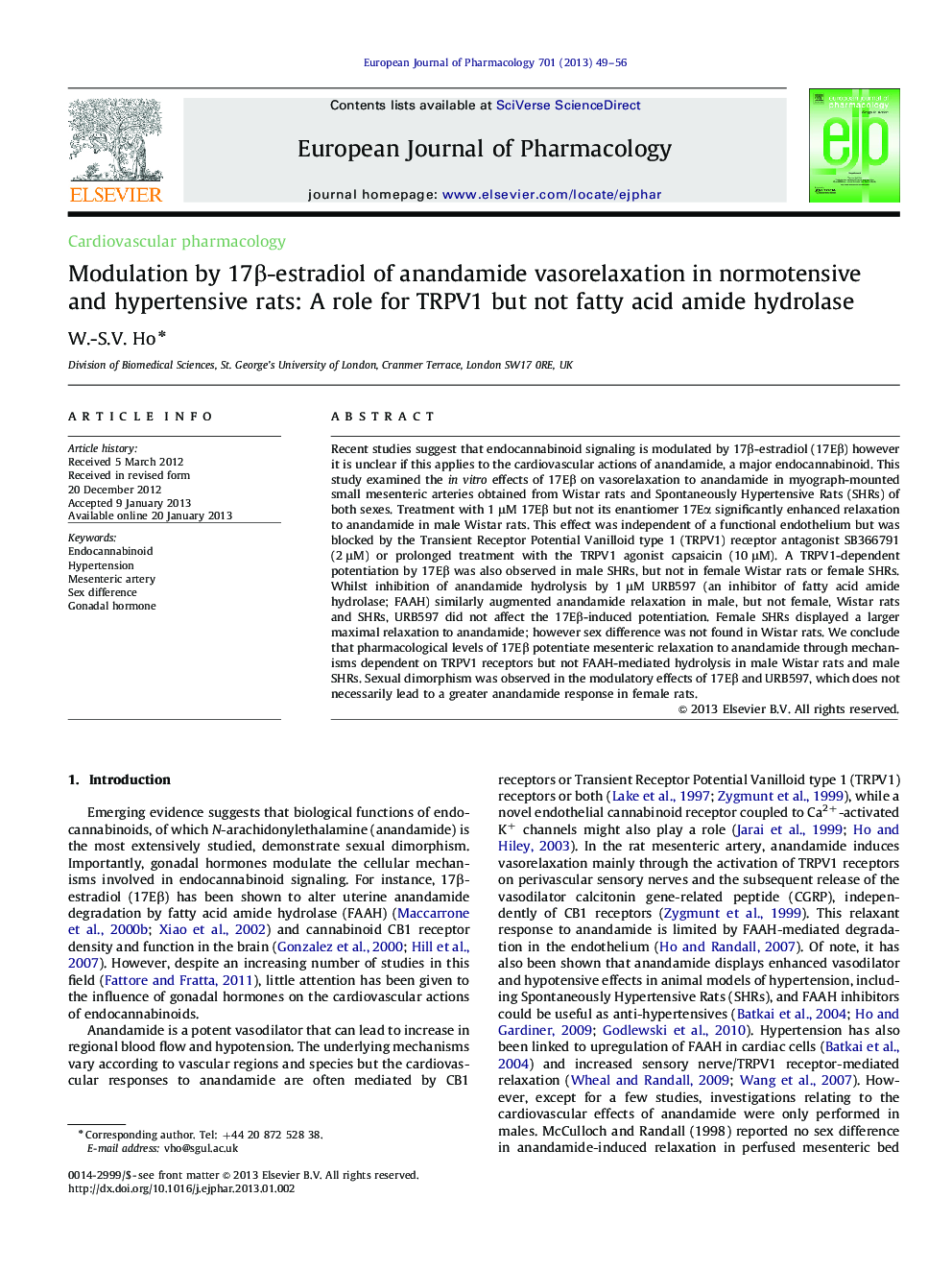| Article ID | Journal | Published Year | Pages | File Type |
|---|---|---|---|---|
| 5828804 | European Journal of Pharmacology | 2013 | 8 Pages |
Abstract
Recent studies suggest that endocannabinoid signaling is modulated by 17β-estradiol (17Eβ) however it is unclear if this applies to the cardiovascular actions of anandamide, a major endocannabinoid. This study examined the in vitro effects of 17Eβ on vasorelaxation to anandamide in myograph-mounted small mesenteric arteries obtained from Wistar rats and Spontaneously Hypertensive Rats (SHRs) of both sexes. Treatment with 1 μM 17Eβ but not its enantiomer 17Eα significantly enhanced relaxation to anandamide in male Wistar rats. This effect was independent of a functional endothelium but was blocked by the Transient Receptor Potential Vanilloid type 1 (TRPV1) receptor antagonist SB366791 (2 μM) or prolonged treatment with the TRPV1 agonist capsaicin (10 μM). A TRPV1-dependent potentiation by 17Eβ was also observed in male SHRs, but not in female Wistar rats or female SHRs. Whilst inhibition of anandamide hydrolysis by 1 μM URB597 (an inhibitor of fatty acid amide hydrolase; FAAH) similarly augmented anandamide relaxation in male, but not female, Wistar rats and SHRs, URB597 did not affect the 17Eβ-induced potentiation. Female SHRs displayed a larger maximal relaxation to anandamide; however sex difference was not found in Wistar rats. We conclude that pharmacological levels of 17Eβ potentiate mesenteric relaxation to anandamide through mechanisms dependent on TRPV1 receptors but not FAAH-mediated hydrolysis in male Wistar rats and male SHRs. Sexual dimorphism was observed in the modulatory effects of 17Eβ and URB597, which does not necessarily lead to a greater anandamide response in female rats.
Related Topics
Life Sciences
Neuroscience
Cellular and Molecular Neuroscience
Authors
W.-S.V. Ho,
